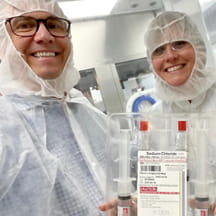Perspectives in pain management
In this series, Children's Hospitals Today explores balancing the use of opioids to ensure children's hospitals can adequately treat pain in children.
Seattle Children's Hospital turned its attention to improving pain management processes in 2009 after a serious safety event. This led to a thorough examination of how opioids are prescribed for ambulatory surgery postoperative pain. As a result, the hospital standardized many protocols for postoperative pain treatment. While this happened before the national conversation turned to the opioid epidemic, the work at Seattle Children's complements emerging strategies that reduce the number of opioids providers prescribe.
Here are the steps Seattle Children's implemented to ensure pediatric patients receive the right care while the hospital manages opioid usage.
Define protocols for more invasive procedures
Certain surgeries are more likely to require more pain treatment medications based on their invasiveness. Seattle Children's has used these protocols for procedures like hernia repairs, tonsillectomies and cranial facial procedures.
Gary Walco, Ph.D., ABPP, director of pain medicine at Seattle Children's, says opioids should be used in addition to, not instead of, other pain medications like acetaminophen, ibuprofen or naproxen. "Opioids should be reserved for moderate to severe pain," he says. "For postoperative pain, it makes sense to add opioids to the regimen for the residual pain." High-intensity pain from issues with sickle cell disease or cancer patients generally require opioids as well.
Build default order sets in electronic health records
These medication ordering protocols start with a shorter amount of time. There's a default setting of three days when a physician orders an opioid and a standard amount of medication that's prescribed for certain issues. The goal is to make it easy for providers to do the right thing by eliminating the burden of individual decision making. "We're not telling any provider how to practice," Walco says. "We're letting them know there are concerns related to prescribing opioids, and as a result, putting ordering cautions in place."
Integrate opioid safety committee with medication safety subcommittee
At Seattle Children's, interdisciplinary groups meet once a month to review issues related to opioid prescribing. Recently, the groups looked at prescribing patterns. This includes providers who continue to combine products, like an opioid plus acetaminophen, as well as those who prescribe opioid medications for longer periods of time.
"Sometimes prescribing for more than three days is justified," Walco says. "But we look at these situations and try to understand, either on a group level or individual level, how we can influence providers to improve prescribing practices." This team is changing opioid prescribing in the emergency department (ED), in outpatient settings and at time of hospital discharge.
Implement pain management care plans
Some patients have existing care plans that can be pulled up in the electronic health record by new providers if that patient comes into the ED or is admitted to the hospital. Physicians can reference these plans before proceeding with prescribing opioids. This tactic cuts the number of patients getting inappropriate access to opioids.
Talk with parents when prescribing opioids
Families at Seattle Children's say they are grateful when providers are mindful of the opioid problem and cautious about how they proceed. "These parents are worried about their child getting opioids because of the problems they hear about," Walco says. "Our physicians make it clear they are aware of the concerns and are focused on prescribing responsibly for the child's pain. They also openly share points of caution and what the parents need to know for their child's care." Hospitals should also consider creating an educational guide for parents to support post-hospital care.


